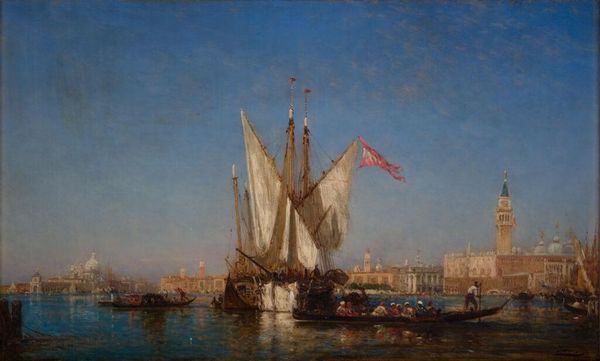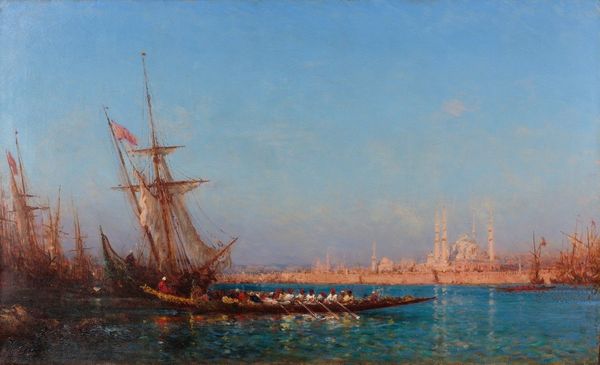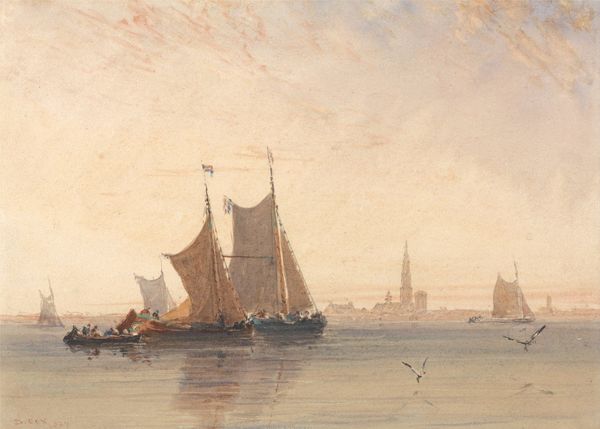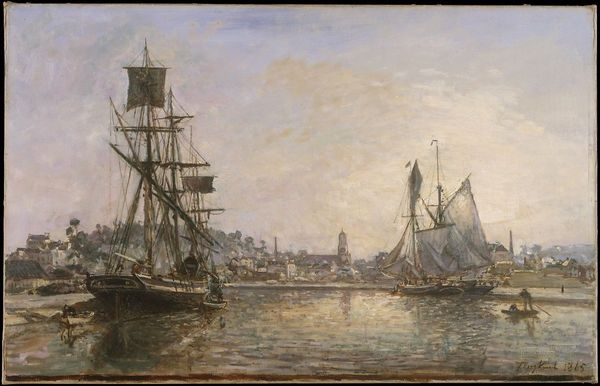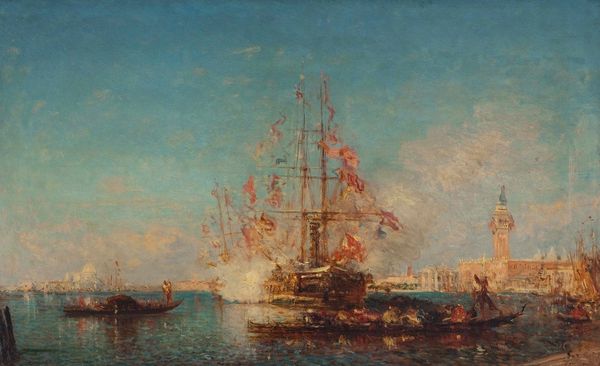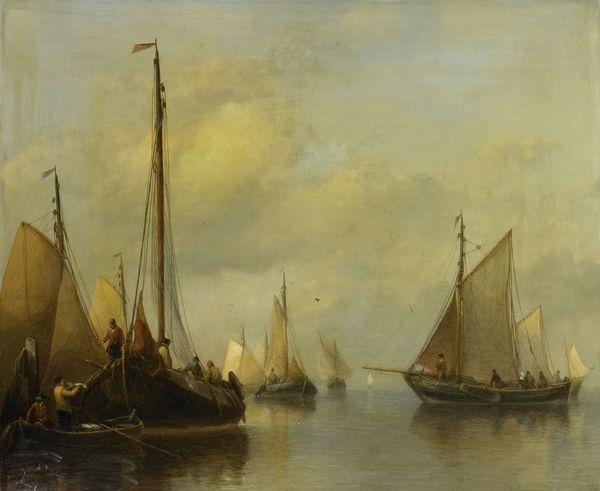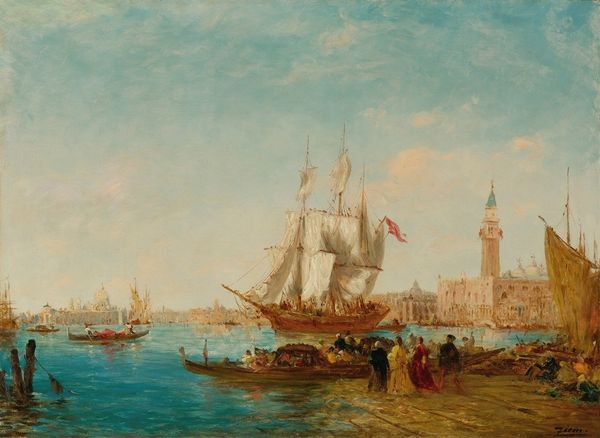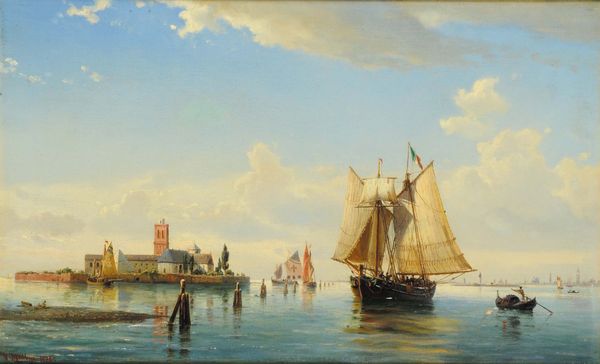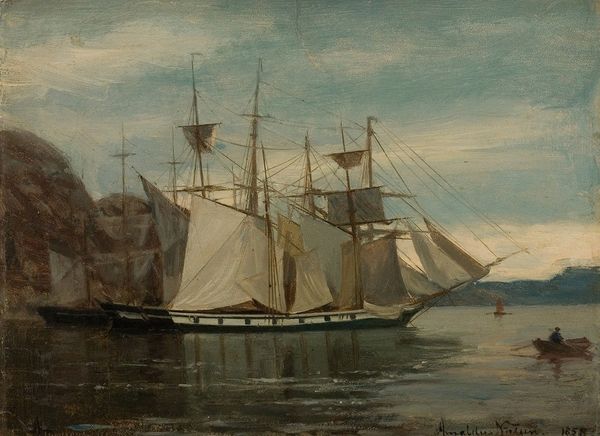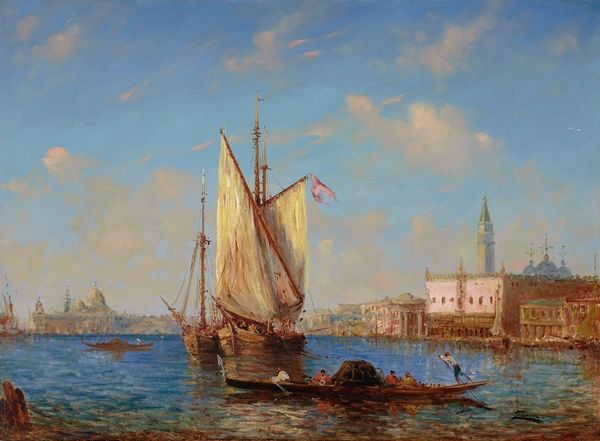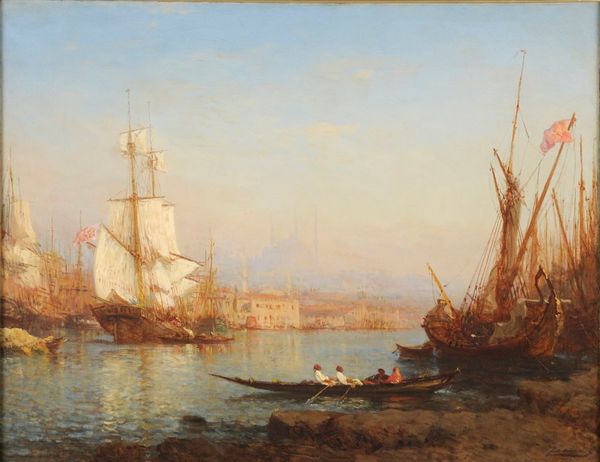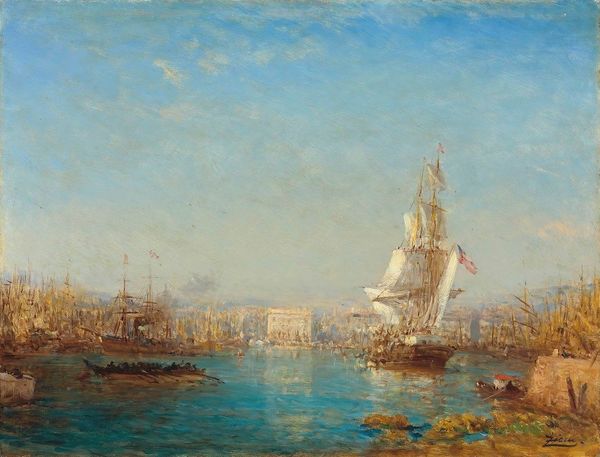
painting, oil-paint, impasto
#
venetian-painting
#
water colours
#
baroque
#
painting
#
oil-paint
#
landscape
#
oil painting
#
impasto
#
romanticism
#
cityscape
#
realism
Copyright: Public Domain: Artvee
Editor: Here we have Félix Ziem's "Topo-Pêcheur et Gondoles dans le Bassin," an oil painting that feels so… nostalgic. The hazy light and the gondolas create this vision of a bygone era, almost like a dream. What draws your attention when you look at this work? Curator: This image invites us to consider Venice not just as a picturesque landscape, but as a site of labor and social interaction. Ziem, although celebrated for his Venetian scenes, often romanticized the city. Yet, if we look closely, we can begin to tease apart the layers of social stratification implicit in the image. Who are these people in the gondolas? Are they tourists, laborers, or something in between? How might their identities and the scene be shaped by the legacies of colonialism and trade that built Venice’s wealth? Editor: That's a really interesting point; I hadn’t considered that. The way the light obscures detail makes everyone seem part of one collective, and it masks any nuance. Curator: Exactly. Consider also the role of the "topo-pêcheur" or fisherman. They appear as almost incidental figures. Is Ziem perhaps eliding the economic realities for many Venetians who lived outside the glamorous facade presented to wealthy tourists? This artistic choice reflects power dynamics—whose story gets told, and how? How does this depiction resonate with contemporary discussions of tourism and its impact on local communities and cultural heritage? Editor: It's interesting how one image can hold so much more than just a pretty picture. The romanticism hides a more complex social landscape. Curator: Indeed. By interrogating Ziem’s choices, we gain insights into the power structures and societal values that shape artistic representation. It reminds us to look critically at what is presented and to question what remains unseen or unacknowledged. Editor: I'll definitely look at these kinds of paintings differently from now on, keeping those power dynamics in mind. Curator: And that’s exactly why we need art history: to learn how to critically engage with these works, understand their origins, and appreciate their cultural implications.
Comments
No comments
Be the first to comment and join the conversation on the ultimate creative platform.
